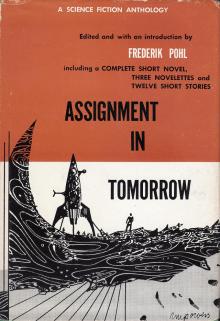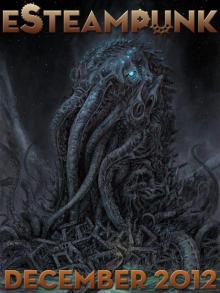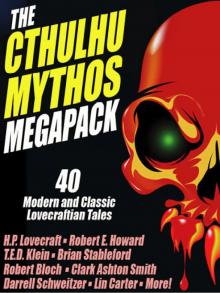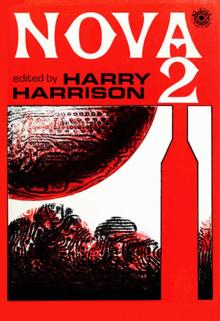Horror in Paradise Read online
Page 4
The open end of the V-shaped atoll is closed by a barrier reef. The great sea waves rage at the reef incessantly, and their booming can be heard over the entire atoll.
Wake is one of the most solitary islands in the world. It is no part of a friendly archipelago. The closest islands, and they are tiny, are far distant. It is thousands of miles from ports like Honolulu or Tokyo. There are no signs of Pacific peoples there, and there is nothing to stay a person—no water or vegetation or shelter. The water around Wake is an endless reach of virgin waves. They surge against Wake and then go on for thousands of miles more before touching land. It is lonely beyond the telling.
The waters immediately around the atoll and within the lagoon are magnificent. On the lee side of the island the water is utterly pellucid. One can see the details of a brain coral at a depth of over a hundred feet. In the lagoon and about the reef there is an abundance of barracuda, yellow tuna, mackerel, shark, and giant ray. On land the only living indigenous creatures are great swarms of birds, a multitude of small land crabs, and that is all. Rats have escaped from ships wrecked on the reefs of Wake and have grown huge and sleek. These living creatures, all of them, play an important part in the story.
Wake would be valueless, uninhabited, bleak and forgotten except for one thing: the airplane. Its very loneliness, its isolation in the midst of empty ocean, made it an invaluable piece of land. It provided a place where planes, to and from Asia, could land and fuel. It was also a place where the military apparatus of the United States could put an advanced outpost—not a strong outpost, for it was too small for that, but a sort of military eye to sweep the emptiness. It was an outpost that was necessarily without muscle. Even the mechanical ingenuity of Americans could do little with such a tiny area.
On the morning of December 8, 1941, Wake Island (it is across the international date line and in Pearl Harbor it was the morning of December 7) bustled with activity. A total of 516 servicemen and 1,216 civilians were at work. An airstrip had been laid out and was in primitive operating condition. The three small islands of the atoll, Peale, Wilkes, and Wake itself were jammed with dumps of ammunition, gasoline, unmounted guns, big water distilleries, small mountains of food. A Marine squadron of twelve F4-F wildcat fighters had just been flown into the island. The Pan American plane, the China Clipper, was at anchor in the lagoon. There was no aircraft detection apparatus of any kind on the island.
At 11:58, eighteen Japanese two-engine bombers, hidden by clouds and unheard because of the booming surf, barreled down on the island in power dives, dropped fragmentation bombs, made a long graceful curve in the sky, and came back to strafe.
It was the beginning of a short, bloody, and ferocious battle. On Christmas Eve, Colonel Devereux did what few Marines have ever been called upon to do. He left his command post with a white bag tied to a broom handle and began negotiations for the surrender of Wake. There was no humiliation in the surrender. The defenders had fought well. The Marine fliers, working under unbelievable difficulties and overwhelming odds, feverishly cannibalized each plane as it was destroyed, until their last plane was literally a mechanical mongrel made up of the parts of six other planes. Then it, too, was lost. The ground defenders fought off one Japanese assault force. The civilians tried to enlist in one or another of the Armed Forces, but were turned down for their own good. If they stayed civilians they would be treated as noncombatants. With a fine disregard for international law the civilians “attached” themselves to various units. They hauled ammunition, set up guns, fired them, dug trenches, fought fires, repaired planes, and died. But none of this could turn aside the inevitable. When the Japanese returned they returned in numbers so vast that the issue was never in doubt.
With the surrender, the Japanese faced a difficult choice. They were determined to build Wake into one link of a powerful chain of fortified islands from which they could continue their strikes eastward. The hundreds of Americans on the islands were merely a hindrance to this, and the Japanese decided to evacuate them as soon as possible. However, they also wished to use the equipment which the Americans had installed on the island. It was intricate and strange machinery. They needed American help to maintain it and they knew that.
The Japanese made a fateful choice. All of the American military personnel was to be evacuated and most of the civilians. The evacuees were sent to Shanghai and most of them survived the war. But one hundred Americans stayed behind.
Not one of the hundred selected Americans was alive after October 7, 1943. Two of them died ordinary deaths. One succumbed to septicemia and was buried. Another, a confirmed alcoholic, displayed great ingenuity in stealing liquor from the Japanese. The third time he was caught he was ordered to apologize and to agree never to steal alcohol again. With the strange lunatic courage of the absolute alcoholic, he looked his captors in the eye and refused. The next moment he was beheaded.
The remaining ninety-eight Americans were to die in one of the most eerie, lemminglike, mysterious, and courageous episodes of that or any other war. Or perhaps it was simple madness.
The Japanese, aided by the captive Americans, began an amazing fortification of Wake. Almost literally they dug deep into the coral and then pulled it over themselves. They built hundreds of coral and concrete pillboxes, underground magazines, and carefully dispersed command posts. Most of these were “bombproof” and were connected to one another by a complex pattern of tunnels and trenches.
Above ground they laid down a fantastic array of defenses. The entire length of the oceanside of the atoll was protected by huge tank traps. Seaward of the traps was a system of slit trenches with steel and concrete pillboxes scattered among them. At the very edge of the sea there was a low hummock of barbed-wire entanglements with land mines placed underneath them. The raised parts of the island bristled with cleverly concealed guns of every description. Anything that could be damaged was buried. Every jeep had its own revetment, every barrel of fuel was buried deep. The island was one vast honeycomb which housed 4,500 Japanese and their ninety-eight American helpers.
They busily dredged the channel between Wilkes and Wake to permit submarines and ships to enter the lagoon. They started to dredge a turning basin for submarines off Wilkes and a channel which would allow submarines to come alongside shoreside quays for replenishing and repairs.
But the Japanese had made a terrible strategic miscalculation. Their vast row of defenses, aimed at Australia and all of Oceania, was stopped short. Midway remained in American hands. Kwajalein and Eniwetok became available to American forces. Also American cruisers could lie safely out of range and lob shells onto the island. Wake became a “milk run.” Cruisers and battleships returning to Pearl Harbor emptied their magazines on the island. Task forces going west used Wake as a practice target, but were given careful instructions not to hinder the dredging of the submarine turning basin—it would be valuable when the Americans repossessed the island. In any case the American air cover over Wake was so intense that no Japanese sub could use the basin. In the midst of a holocaust of bombs and shells the dredge working the turning basin operated with perfect immunity. Carrier planes, and later land-based planes, were almost constantly overhead. It soon became impossible to reinforce or supply Wake by surface vessels. Instead of being a redoubt in a massive defense line, Wake had become an isolated and tortured island, under continuous siege.
The last attempt at surface reinforcement came in 1943. The Suwa Maru of ten thousand tons came to Wake with supplies. A patrolling American submarine torpedoed her twice just as she came to her moorings. In desperation, her skipper ran her onto the reef, where her rusty carcass can be seen today. Now for long months and then years the empty horizon around Wake was broken only by hostile ships which came in quietly but brazenly, lobbed in their devastating bombardments, and then vanished.
The ninety-eight Americans were, under the circumstances, given remarkably good treatment. The Japanese, knowing that they were essential for the maintenance of the island
’s intricate communication and distilling systems, gave them better rations than the Japanese soldiers received. Even so, the ninety-eight lived in a queer and dreamlike world. In those scattered hours when it was possible to be above ground they worked for the Japanese to repair bomb and shell damage. At night they crowded back into their two shelters and talked. They were all highly skilled craftsmen, and it is safe to assume that their intelligence was a cut or two above average.
What do men do in such utter isolation? They talk, they conspire, they form cliques, they engage in irritable arguments, and they exchange rumors. Indeed, rumors become the staff of their psychic life. This is true of all prisons and concentration camps. But most prisoners, by one means or another, have a contact with the outside world. Even in the most closely guarded of Nazi concentration camps, there were clandestine radios and fairly accurate reports of what was happening on the “outside.” Guards could be bribed for information, the progress of the war could be charted, escape committees could be formed, hope could be nourished. But on Wake there was not the slightest possibility of contact with the outside. The Americans did not speak Japanese, and the Japanese themselves had only the most meager radio contact with Japan. There was also the stunning and always present realization that they were surrounded by hundreds of miles of open sea. The Pacific, the sheer immense bulk of water, was their most efficient guard, kept them in the most perfect isolation. The Japanese knew this too, and the actual guard maintained over the prisoners was slight.
There is no other group of prisoners I know of during World War II which lived in such complete physical and psychological isolation. Anything that the ninety-eight “knew” must be manufactured from whole cloth.
Psychological and social anarchy cannot be endured for long. We can assume that at some point the ninety-eight men, consciously or unconsciously, formed themselves into some sort of social hierarchy. Natural leaders emerged; some men became identified as comics; others became chronic complainers; some withdrew into themselves. But one thing is certain, the group could feed only on itself. Slowly it began to manufacture a “reality” about the outside world. Some men more imaginative and persuasive and glib than the others made guesses as to what was happening outside. Just as in primitive societies the unknown is made known by oracles, so the ninety-eight invented a mythology. As it was passed from man to man it lost the quality of myth; it became a form of reality. When it was repeated back to the original oracles they also believed it. All of them believed for a simple reason: in such awesome isolation man must have something to believe, or go mad.
The tiny world of Wake became increasingly bizarre. The water distillers still worked, and rainwater was carefully gathered, but food soon came into short supply. The Japanese made heroic efforts to supply the island. Surface ships being out of the question, they attempted to send in food by submarine. These supply submarines made a hazardous and slow passage from Japan. In daylight hours they submerged and stopped their engines. At night they came to the surface and went ahead at full speed. They carried a curious cargo. Hundred-pound bags of rice were surrounded by crude latex rubber and made into a waterproof and floatable package. Hundreds of these were strapped to the open decks of the submarines.
When a submarine arrived off Wake, it was still in mortal danger. American submarines constantly patrolled the island, and the chances of being detected were high. To surface during the day, even for a few moments, was to commit suicide. The Japanese submarines and the garrison developed a peculiar technique. At a prearranged time, chosen so that the tide would be favorable and the night at its blackest, the submarine would surface for a few moments. Lining the windward edge of the reef would be hundreds of Japanese soldiers, peering into the darkness. When the submarine surfaced, picked men ran down the decks, cutting the bindings which held the rice bags to the submarine. The submarine skipper then gave a single guarded flash of an Aldis lamp toward the shore. Then he closed his hatches and submerged. As the submarine sank, the rice bags floated from her decks and bobbed on the water.
For the Japanese lining the reef, it was a desperate time. Quite beyond their control their very life was bobbing about in the dark water. The Japanese soldiers, their eyes sharpened by hunger, studied each of the unending procession of waves. There would be a tormented period when they did not know whether tide and wind were favoring them. Then, with luck, the heavy yellow packages would come surging up onto the reef. The soldiers were too desperate to cheer. They fought the bundles free of the surf and trotted them to a central storehouse. The next morning, every foot of the periphery of the island would be searched to see that no bags had been missed. Occasionally, the tides would play a cruel trick, and in the morning they would see a dozen of the bags that had worked around into the lee of the island. They might sit there for days, only a hundred yards offshore, but the Japanese did not dare to put a boat into the water. At night, the more skillful swimmers would venture into the dark waters to try to retrieve the bags. Occasionally, they were successful. Sometimes the swimmers merely disappeared forever into the ocean.
The ninety-eight Americans were aware of a successful submarine delivery only because of the sudden spurt of optimism and good cheer among their captors. Admiral Sakaibara, the officer-in-charge of the island, was too orderly a man to permit an increase in rations. He had some inkling of how far the food had to be stretched. The Americans began to feel the pinch. Their food rations were cut. Ribs began to show on men who had always been fat; thin men became gaunt. When food was divided they gathered and watched quietly, only their burning eyes revealing their intensity.
Very soon, however, even the submarine trips became too hazardous. They were discontinued and the island was on its own. Everyone, including the Americans, now realized that they had to subsist on their accumulated stores plus whatever food the island and its surrounding waters could supply. There commenced one of the most ingenious and thorough efforts ever made to find and husband food. Rat hunting, for example, became an organized activity. The orderly Japanese records indicate that they caught and devoured over 54,000 rats. The thousands of birds on the island were carefully stalked, slaughtered, and eaten. Every crevice, however small, was searched to see if it might contain bird eggs. Land crabs were hunted with a ruthless intensity.
By the end of 1944, there was not a single bird, rat or crab left on the island.
Nothing was wasted. The Japanese discovered that the leaves of the morning-glory vines were edible, and the island was soon bare of these. Too late there was the realization that the very thoroughness of the search was a mistake. By killing all of the birds and eating all of their eggs they had assured that no new generations of birds or eggs would appear. By killing all of the rats they assured that no new rats would appear. By eating all of the morning-glory vines they assured that no future vines would grow. It was a bitter discovery. It was also irreversible.
Their wits sharpened by desperation, the Japanese set about to build truck gardens. But how does one build a garden on an island which has no soil? The Japanese extracted the soil from their own bodies. They carefully gathered the night soil, their own excrement, mixed it with sand, and dumped it into great boxes made of brass and iron. This compost was then planted with tomato and squash and melon seeds which came in by submarine. Never were gardens so carefully tended and so carefully watched. The precious water, now in short supply, was sluiced over the plants by the helmetful. Full captains were given formal responsibility for guarding the tiny plots. Occasionally during a strafing, spray bullets would tear into the gardens, tearing plants to pieces, spraying excrement over the containing walls. After a raid each plot was carefully surveyed and salvageable vines were replanted. Bits of scattered excrement were gathered and returned to the plot. Hopelessly shattered plants were used in soup.
The Japanese were used to eating seaweed, and the reef and lagoon were denuded of edible seaweed to the depth that the Japanese could dive.
At first the fish along th
e reef and inside the lagoon were caught in abundance. But the Japanese made a crucial mistake. They used hand grenades, which could be thrown into a school of fish, and the explosion stunned the fish long enough for them to be gathered. The Japanese did not know, however, that the explosion also killed the billions of fish eggs that accumulated invisibly in the crevices of the reef and lagoon. After a short while, the fish were also exterminated and there were no new generations to replace them.
The ninety-eight Americans watched all of this with a horrified fascination. At some point in 1943, they began to realize that the bombings and the disruption of the island life were making their skills unnecessary. They spent less and less time doing useful work. More and more they talked and watched and returned to their talking. They were tom between hoping that the Japanese would find food in which they would share and satisfaction in seeing their captors grow weaker. For a time they speculated on whether the Americans would reinvade before all of them starved or whether the island would merely be bypassed. Such ambiguity became impossible. They came to the conclusion, and no man dared or wished to oppose it, that the invasion would occur first. In so hermetic an isolation, with hunger beginning to make tempers sharp and rationality difficult, they all sensed that their survival depended on unanimity. A minority view, even a well-considered minority view, was impossible. Those that doubted were silent, and finally even they came to share the view.
The disruption of Wake continued. Once the entire garrison had been tightly bound together by an elaborate communication system. It was gradually destroyed. Now little clots of Japanese soldiers huddled around their gardens, stared hollow-eyed at the ocean, dragged themselves to cover when American planes approached. Once, when soldiers had died, their bodies had been cremated and the ashes returned to Japan. Now they were carefully buried beneath the garden to add nourishment to the soil. There was also a time when the various groups of men had visited with one another. Now this called for too great an expenditure of energy. They beat out signals to one another by banging wrenches against empty CO2 bottles. Where once the island had teemed with busy men, it now became more roomy. The Japanese were beginning to die from hunger. Eventually half of them starved to death—over two thousand bodies went beneath the garden plots to enrich them. By day the survivors did a minimum amount of repair work. By night they slept. The certainty of doom became a vapor in the air. The private diaries which the Japanese kept were long messages of farewell, written by men who were certain of their death.

![[What Might Have Been 02] Alternate Heroes Read online](http://i1.bookreadfree.com/27/what_might_have_been_02_alternate_heroes_preview.jpg) [What Might Have Been 02] Alternate Heroes
[What Might Have Been 02] Alternate Heroes![[What Might Have Been 01] Alternate Empires Read online](http://i1.bookreadfree.com/01/what_might_have_been_01_alternate_empires_preview.jpg) [What Might Have Been 01] Alternate Empires
[What Might Have Been 01] Alternate Empires SEDUCTIVE: A Contemporary Romance Anthology
SEDUCTIVE: A Contemporary Romance Anthology A Year of Love
A Year of Love Super Daddies: A Naughty Nerdy Romantic Comedy Anthology
Super Daddies: A Naughty Nerdy Romantic Comedy Anthology Mystical Xmas: Paranormal Romance Anthology Box Set
Mystical Xmas: Paranormal Romance Anthology Box Set![[What Might Have Been 04] Alternate Americas Read online](http://i1.bookreadfree.com/06/what_might_have_been_04_alternate_americas_preview.jpg) [What Might Have Been 04] Alternate Americas
[What Might Have Been 04] Alternate Americas 9 Tales of Space and Time
9 Tales of Space and Time Assignment in Tomorrow
Assignment in Tomorrow![[What Might Have Been 03] Alternate Wars Read online](http://i1.bookreadfree.com/i/03/16/what_might_have_been_03_alternate_wars_preview.jpg) [What Might Have Been 03] Alternate Wars
[What Might Have Been 03] Alternate Wars The Complete Dangerous Visions
The Complete Dangerous Visions The IF Reader of Science Fiction
The IF Reader of Science Fiction Holiday in the Heart
Holiday in the Heart Torquere Press Sips and Shots
Torquere Press Sips and Shots Possess: An Alpha Anthology
Possess: An Alpha Anthology Beyond Control
Beyond Control Bad Boys Under the Mistletoe: A Begging for Bad Boys Collection
Bad Boys Under the Mistletoe: A Begging for Bad Boys Collection Hugo Awards: The Short Stories (Volume 3)
Hugo Awards: The Short Stories (Volume 3) The Second IF Reader of Science Fiction
The Second IF Reader of Science Fiction Astounding Science Fiction Stories Vol 1
Astounding Science Fiction Stories Vol 1 What Happens Over Spring Break: A Short Story Anthology
What Happens Over Spring Break: A Short Story Anthology eSteampunk Vol. 01 No. 02
eSteampunk Vol. 01 No. 02 SHADOWRUN: Spells and Chrome (shadowrun)
SHADOWRUN: Spells and Chrome (shadowrun) Dark Tales
Dark Tales Getting Schooled (Craving #9)
Getting Schooled (Craving #9) The Hellfire Book of Beltane Volume One
The Hellfire Book of Beltane Volume One The Alpha's
The Alpha's The Future Is Short
The Future Is Short From the Heart: A Valentine's Day Anthology
From the Heart: A Valentine's Day Anthology Reckless: A Bad Boyz Anthology
Reckless: A Bad Boyz Anthology LOL #3 Romantic Comedy Anthology
LOL #3 Romantic Comedy Anthology A Christmas Seduction: A Regency Anthology
A Christmas Seduction: A Regency Anthology All a Cowboy Wants for Christmas
All a Cowboy Wants for Christmas Hugo Awards: The Short Stories (Volume 2)
Hugo Awards: The Short Stories (Volume 2) The Golden Age of Science Fiction Novels Vol 01
The Golden Age of Science Fiction Novels Vol 01 The Sirens of SaSS Anthology
The Sirens of SaSS Anthology Mistletoe & Kisses
Mistletoe & Kisses Explorers of Space
Explorers of Space Time Travel Omnibus Volume 2
Time Travel Omnibus Volume 2 Dead Science: A Zombie Anthology
Dead Science: A Zombie Anthology Beer Goggles Anthology
Beer Goggles Anthology Apexology: Horror
Apexology: Horror Heat Wave: A Summer Loving Anthology
Heat Wave: A Summer Loving Anthology Fall in Love
Fall in Love Love Under the Mistletoe
Love Under the Mistletoe Hook & Ladder 69: Eighteen Authors...One Sexy Firehouse.
Hook & Ladder 69: Eighteen Authors...One Sexy Firehouse. LOL #2 Romantic Comedy Anthology - Volume 2 - Even More All-New Romance Stories by Bestselling Authors (LOL Romantic Comedy Anthology #2)
LOL #2 Romantic Comedy Anthology - Volume 2 - Even More All-New Romance Stories by Bestselling Authors (LOL Romantic Comedy Anthology #2) Off the Beaten Path: Eight Tales of the Paranormal
Off the Beaten Path: Eight Tales of the Paranormal![Best New Zombie [3] - Best New Zombie Tales, Vol. 3 Read online](http://i1.bookreadfree.com/i/03/25/best_new_zombie_3_-_best_new_zombie_tales_vol_3_preview.jpg) Best New Zombie [3] - Best New Zombie Tales, Vol. 3
Best New Zombie [3] - Best New Zombie Tales, Vol. 3 The Golden Age of Science Fiction Novels Vol 05
The Golden Age of Science Fiction Novels Vol 05 Alphas of Sin
Alphas of Sin Halloween Spirits: 11 Tales for the Darkest Night
Halloween Spirits: 11 Tales for the Darkest Night Night Shift 2
Night Shift 2 Ellora's Cavemen: Jewels of the Nile II
Ellora's Cavemen: Jewels of the Nile II Hot for the Holidays (21 Holiday Short Stories): A Collection of Naughty and Nice Holiday Romances
Hot for the Holidays (21 Holiday Short Stories): A Collection of Naughty and Nice Holiday Romances Of Heaven and Hell
Of Heaven and Hell 12 Christmas Romances To Melt Your Heart
12 Christmas Romances To Melt Your Heart '90s Playlist (Romance Rewind #1)
'90s Playlist (Romance Rewind #1) Bleed Blue 69: Twenty-Five Authors…One Sexy Police Station
Bleed Blue 69: Twenty-Five Authors…One Sexy Police Station The Cthulhu Mythos Megapack (40 Modern and Classic Lovecraftian Tales)
The Cthulhu Mythos Megapack (40 Modern and Classic Lovecraftian Tales) Nova 3
Nova 3 Unbroken: 13 Stories Starring Disabled Teens
Unbroken: 13 Stories Starring Disabled Teens Dead Men (and Women) Walking
Dead Men (and Women) Walking Sweet Seduction
Sweet Seduction Brothel: The Magnolia Diaries
Brothel: The Magnolia Diaries Rogues (A Boys Behaving Badly Anthology #1)
Rogues (A Boys Behaving Badly Anthology #1) Best New Zombie Tales, Vol. 3
Best New Zombie Tales, Vol. 3![The Hellfire Bo [1] - The Hellfire Book of Beltane Volume One Read online](http://i1.bookreadfree.com/i1/04/06/the_hellfire_bo_1_-_the_hellfire_book_of_beltane_volume_one_preview.jpg) The Hellfire Bo [1] - The Hellfire Book of Beltane Volume One
The Hellfire Bo [1] - The Hellfire Book of Beltane Volume One Horror in Paradise
Horror in Paradise Time Travel Omnibus Volume 1
Time Travel Omnibus Volume 1 More Than Words: Stories of Courage
More Than Words: Stories of Courage River Walk: Ten Kinky Collaborations
River Walk: Ten Kinky Collaborations F*cking Awkward
F*cking Awkward Hearts of England
Hearts of England The Golden Age of Science Fiction Novels Vol 03
The Golden Age of Science Fiction Novels Vol 03 Drunk in Love
Drunk in Love Up and Coming: Stories by the 2016 Campbell-Eligible Authors
Up and Coming: Stories by the 2016 Campbell-Eligible Authors Descended from Darkness: Apex Magazine Vol I
Descended from Darkness: Apex Magazine Vol I Dominant Persuasions Anthology: 12 Tales of D/s, Where Mastery Meets Passion
Dominant Persuasions Anthology: 12 Tales of D/s, Where Mastery Meets Passion The Golden Age of Science Fiction Novels Vol 04
The Golden Age of Science Fiction Novels Vol 04 Passion in Portland 2016 Anthology
Passion in Portland 2016 Anthology Men of Mayhem
Men of Mayhem The Dirty Anthology
The Dirty Anthology Hot For Teacher
Hot For Teacher Nova 2
Nova 2 eSteampunk Vol. 01 No. 03
eSteampunk Vol. 01 No. 03 Afternoon Tea Mysteries Vol Three
Afternoon Tea Mysteries Vol Three Romance in the Rain
Romance in the Rain Tales From the Crossroad Volume 1
Tales From the Crossroad Volume 1 A Very Alpha Christmas
A Very Alpha Christmas Nova 1
Nova 1 Once: A Collection of Sinfully Sexy and Twisted Tales
Once: A Collection of Sinfully Sexy and Twisted Tales Nuts About You: A Testicular Cancer Anthology
Nuts About You: A Testicular Cancer Anthology From the Street (shadowrun stories)
From the Street (shadowrun stories) Box of 1Night Stands: 21 Sizzling Nights
Box of 1Night Stands: 21 Sizzling Nights Descended from Darkness: Vol II
Descended from Darkness: Vol II Pink Shades of Words: Walk 2016
Pink Shades of Words: Walk 2016 The Art of Taking Chances
The Art of Taking Chances The Butterfly Box_A SASS Anthology
The Butterfly Box_A SASS Anthology Harlan County Horrors
Harlan County Horrors![Afternoon Tea Mysteries [Vol Three] Read online](http://i1.bookreadfree.com/i2/04/12/afternoon_tea_mysteries_vol_three_preview.jpg) Afternoon Tea Mysteries [Vol Three]
Afternoon Tea Mysteries [Vol Three] The Golden Age of Science Fiction Novels Vol 02
The Golden Age of Science Fiction Novels Vol 02 Ellora's Cavemen: Jewels of the Nile III
Ellora's Cavemen: Jewels of the Nile III